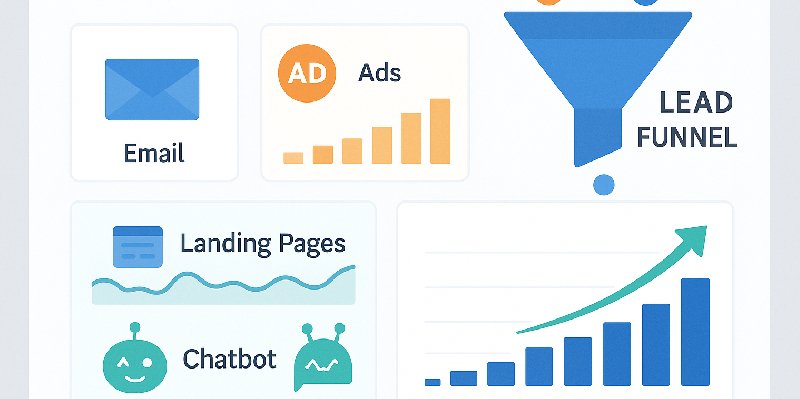Leads are the lifeblood of any business. In 2025, with buyer behavior evolving and AI tools at your fingertips, lead generation has become smarter, more targeted, and more efficient. If you're still relying on outdated methods, you're missing out.
Here are 8 lead generation strategies you should implement today.
1. Build High-Converting Landing Pages
Create dedicated landing pages for specific offers. Use:
-
A compelling headline
-
Bullet-point benefits
-
A lead magnet (e.g., free ebook, trial, or checklist)
-
A clear CTA
Tools like Carrd, Systeme.io, and Elementor make this easy.
2. Use Chatbots for Instant Engagement
AI-powered chatbots (like Tidio or Intercom) engage visitors the moment they land on your site — capturing leads even when you’re offline.
3. Offer Lead Magnets
Free resources like:
-
PDF guides
-
Webinars
-
Case studies
-
Templates
These are great for email list building and improving your perceived value.
4. Run Targeted Social Media Ads
Facebook, Instagram, and LinkedIn ads — when paired with strong copy and a clear CTA — can generate leads at scale, especially with proper audience segmentation.
5. Optimize Your Website for Lead Capture
Don’t just rely on a “Contact Us” page. Add:
-
Exit-intent popups
-
Slide-ins on scroll
-
Sticky bars with offers
All should include an easy way to opt-in.
6. Use Lead Scoring & CRM Automation
Platforms like Zoho, HubSpot, and Pipedrive now use AI to score leads automatically and trigger follow-up emails or tasks for your sales team.
7. Leverage LinkedIn Outreach
In 2025, LinkedIn is still king for B2B leads. Use tools like Expandi or Phantombuster to automate outreach campaigns — but keep messages personalized!
8. Launch SEO-Driven Blog Content
Write keyword-optimized blog posts that solve real problems. Add in-content CTAs like “Download this checklist” to convert readers into leads.
Conclusion
The future of lead generation is automated, personalized, and data-driven. With the right strategy, even a small business can generate a consistent flow of quality leads without burning out on manual outreach.
Start small, test frequently, and scale what works.


